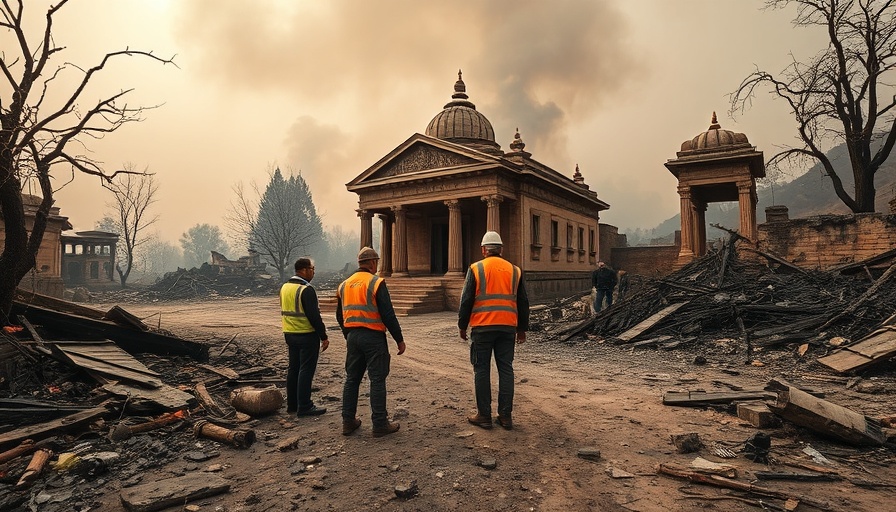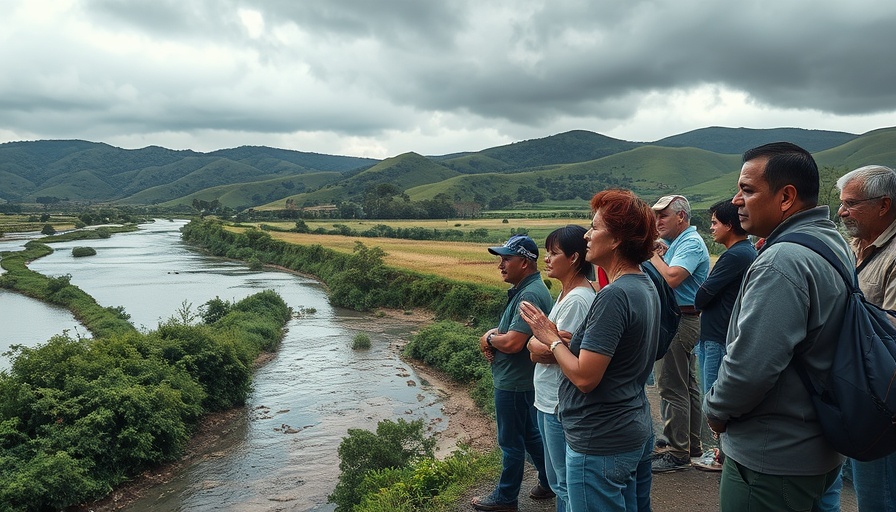
Unprecedented Wildfires Devastate South Korea's Historical Heritage
The recent wildfires in South Korea have left an indelible mark on the nation, as seen with the destruction of the centuries-old Gounsa temple. This disaster, attributed to climate change and changing land management practices, poses a significant threat to both cultural heritage and biodiversity. Situated in the mountainous regions of South Korea, Gounsa has been a symbol of spiritual and historical significance for generations, marking an unsettling moment in the country's firefighting efforts and understanding of natural disaster management.
Understanding the Ecology Behind Wildfires
Wildfires have gained frequency and intensity globally, accentuated by prolonged drought conditions and higher temperatures. In the case of South Korea, the traditional ecological practices that once maintained the balance in forests are increasingly overshadowed by rampant urbanization and agricultural expansion. The loss of Gounsa temple serves as a plea for immediate reforms in land management and fire prevention strategies in the face of accelerating climate trends.
The Societal Impact of Cultural Loss
The destruction of Gounsa temple reflects a deeper societal concern regarding the preservation of cultural assets amid environmental crises. Beyond being a physical structure, Gounsa represented communal identity and historical lineage for many locals. The emotional implications of losing such a landmark extend to feelings of grief and disconnection from heritage. This loss raises questions regarding the responsibilities of both individuals and governments in safeguarding their historical sites.
Lessons for Future Preparedness
2018 saw devastating wildfires in California and Australia, highlighting that climate change is a phenomenon not limited to one region. A collective approach to learning from these disasters, including South Korea’s recent experience with Gounsa, can provide critical insights into more effective disaster responses. Investments in fire-resistant technology and community engagement in fire prevention planning can lead to more resilient infrastructure and mitigate future losses.
Conclusion and Call to Action
As communities grapple with the impact of natural disasters like the wildfires affecting Gounsa temple, it becomes imperative that society takes proactive steps. By understanding the ecological, cultural, and emotional ramifications of such loss, not only can lessons learned avoid future tragedies, but they can enhance community resilience. To support recovery efforts and protect cultural heritages around the globe, it is vital for citizens and governments alike to advocate for climate action and fire-proofing our historical landmarks.
 Add Row
Add Row  Add
Add 




 Add Row
Add Row  Add
Add 

Write A Comment